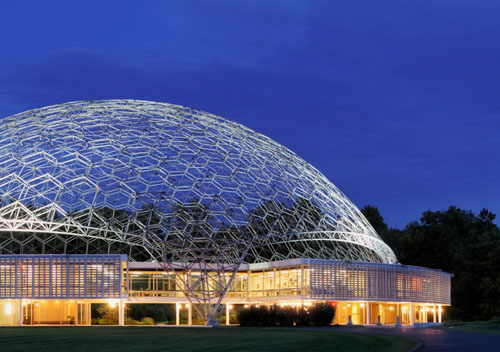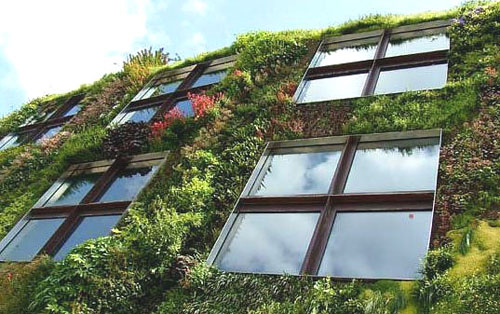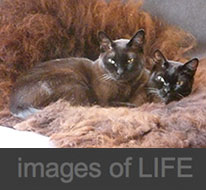DESIGN THINKING
Curious how Design Thinking is getting all the buzz now, as though it is a new way of thinking. Really, it has been around for a very long time, think Edison, Pasteur, Newton, et al!. It was quite prevalent among the forward thinking, dare I say elitist, designers at the design and architecture schools I passed through?
Bucky Fuller extended his fascination with crystalline structures, making the leap to apply their design concept to architecture (among other things). Lucky me, I had the great fortune to spend a semester with Bucky in the San Jose State College Design Program, back in the flower-power days of the ’60’s.

The ASM International World Headquarters, originally constructed in 1959, was designed by John Terence Kelly and R. Buckminster Fuller, who is well known for his geodesic domes, environmentally-conscious designs and the dymaxion car.
Is Design Thinking finally going mainstream, in 2013?
Has the accessibility of information via technology, at long last helped break down the silos which contain people and their thinking; silos restricting them from thinking about all the different possible solutions available in different disciplines or areas of knowledge?
Today information is so readily available, even outside our comfort zone, which in the past would have been obscure or difficult to discover.
Design Thinking is all about considering the options. But more than considering options, it’s about considering things that are maybe not even in the same universe! Thinking ‘outside the box’ or alternatively “cutting up the box” is just a part of Design Thinking; considering & trying endless options, and being willing to accept failure at many attempts, and still trying again and again.
Design Thinking is driven in large part by finding out what you don’t know, learning about it, and trying the idea on your particular problem. The result may be solving the problem of the day, or inventing the future.
Of course, some problems don’t get solved because people are solving the ‘wrong’ problem!
A good idea is to first examine what actually is the problem asking to be solved; which will certainly depend on asking the right questions or the right people. Think about how many different ways the problem might be viewed, and through what variety of lenses and disciplines? How many different points of view can we find? What diverse mindsets can we bring to the mix to collaborate on both defining the problem in a new and different way, and then working to solve it.
How bizarre can the combinations of people be, and still be fruitful? Think about bringing an architect together with a biologist and a plumber (sorry; “Waste Products Engineer’), to solve the problem of unsightly buildings, temperature control, and gray-water management.

(gray-water filtered, reused in hand washing and toilet flushing= irrigates living wall = rinse and repeat )
Design Thinking is most difficult with Big & Established, Inc. How counter intuitive to Design Thinking can they get? A suitable example: “trenching” inefficiency.
A main traffic artery has just been (finally) resurfaced, at great cost and inconvenience. No more potholes! Then, 8 months later, the local electrical utility digs a trench to lay cable. Another 6 months; the gas company needs to replace their aging lines; seemingly every year another utility gets their opportunity to open up the same trench. And after all that the unsightly antiquated telephone poles remain and still facilitate internet bandwidth (2 missed opportunities) HELLO! Did no one at the planning level think to get everyone in a room and PLAN a one-time, sequenced installation of everything that must be under the road; and installing the infrastructure for a smart and connected future!
It is often near impossible for Big & Established to think “many” or try “many” options, as they are straight lined to their bottom line.
However on our little island, our member-owned utility cooperative had the forethought (DesignThink) to install fiber down the center of the island in 2001. The initial reason was to solve a problem of slow communications just within Opalco (the co-op, which is spread over several islands), and to facilitate ‘automated distribution’ capabilities (remote monitoring & control) for their electric service customers,
In this example of Design Thinking, Opalco was not just thinking of their 2001 needs, but planning for what the community would need in the next 10, 20 and beyond years. Mega bandwidth is just around the corner for us now, 12 years later; that is, if we can mobilize our sometimes ‘Luddite’ community to overcome their fear of “technology” and to move forward …..another case where we need to look around, and discover the many ways that technology can make our communities stronger and smarter..
Asking WHY is the key question in Design Thinking. An example from the recent Design & Thinking documentary illustrates this very well:
The stated problem is building a bridge across the river? How do we build the bridge? What type of bridge do we build? What materials do we use? Let’s hire the architect and engineer! You know the drill…
The Design Thinker asks “why” do you want to build a bridge across the river? The possibilities are infinite, and might include: we need to deliver messages; we need to deliver packages of fresh fish every Thursday; if someone gets sick they need to get to the hospital in the town on the other side of the river; we need to connect two rail systems; we need to get people and cars across the river…
There are solutions other than a bridge when you truly explore and consider the WHY. Messages could go via wireless or carrier pigeon! The fresh fish and the sick person could go by air or boat. The train and the cars could go by a ferry……… Is $550M for a bridge the best solution? Maybe, but you should at least consider your options.
When you ask WHY and put design thinking into context, you often find you are designing for the experience rather than just the product. AIGA was asked by the government to redesign the voters ballot, and their response was to redesign the entire election experience, right from the time you hear there is going to be an election, to the voting process, to the election results, and after.
More examples:
Mission Bicycle Company, where customers design their own bike.
A team cooking experience which combines cooking and entertainment at Hands On Gourmet
The Dyson faucet, which dries your hands in place after washing them (video below)
[youtube http://www.youtube.com/watch?v=HUFLq2uDirE?rel=0]
Design to many is just FORM. But a successful FORM involves FUNCTION. Another thought is to add CONTEXT.
Voila! FORM+FUNCTION+CONTEXT= Design Thinking? How about FORM follows FUNCTION defined by CONTEXT. My very short take on Design Thinking.
James Ferris
Note from CASUDI: James Ferris is my design partner of 23 years, He is principal and creative director of our boutique consultancy esse group and architectural design firm inclinedesign. He recently blogged at barnfindriva, a niche blog about a classic Riva speedboat, which climaxed in a book. He is passionate about design, a perfectionist and always looking for better designs, materials, ways to build things and improve life.
James has promised to guest post here on design related things that interest him, and I hope will interest you?
images: ASM Internationall©ESTO Jeff Goldberry livingwall©greenbuilding







